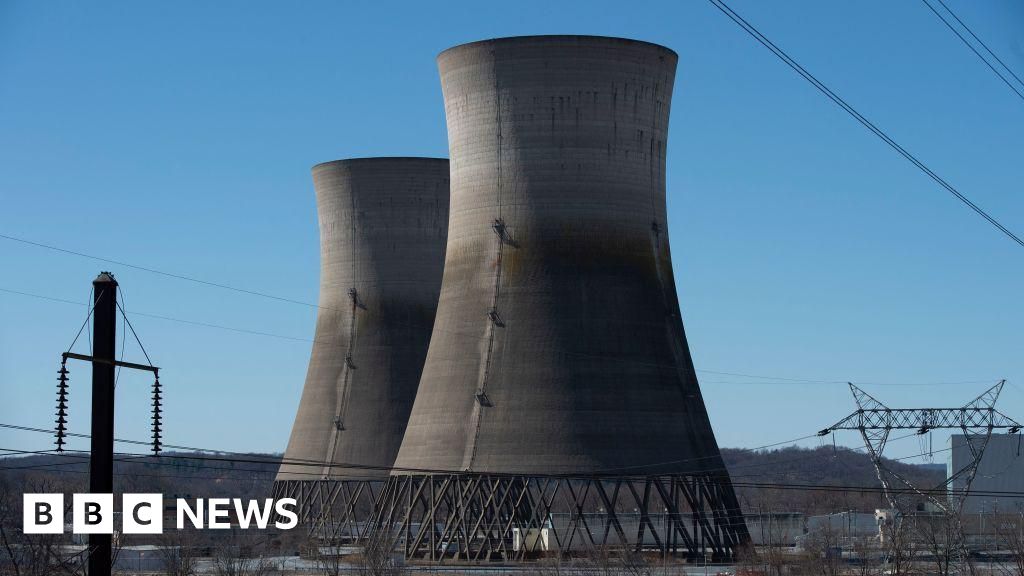When I was younger, I never considered myself a reader until — at 12 years old — I picked up a copy of Percy Jackson and The Olympians: The Lightning Thief off of a library shelf at school. My nose was perpetually stuck in a book after that. I spent my formative years reading anything I could get my hands on, but I quickly found my home in the Young Adult (YA) section of every library or bookstore I walked into.
Chances are, if you’re someone who consider yourself a reader, you have also spent a significant amount of time perusing the stacks labeled YA at your local bookstore or library. YA is home to some of pop culture’s biggest hits, like Divergent, The Hunger Games and Twilight. However, the fact that YA has become so popular does not mean that it is intended for all audiences. In recent years, adult readers have poured into the category, altering it significantly.
What is YA?
YA is a category — not a genre. A genre groups books by a set of thematic elements, while a category groups books by their intended audience. When YA gets redefined as a genre, it can lose touch with its audience.
The Young Adult Library Service Association first created the YA category in the 1960s to cater to readers aged 12–18. They realized that there was not a space for teens in the literary world, so they gave them one.
Other than age range, there are no conventions that YA must follow. However, there is a lot of overlap in the content that these stories explore. YA books tend to share common tropes, character archetypes and plotlines. The main characters tend to be 12–18 years old, the same age as the readers. “Good girls” and “bad boys” are frequent archetypes. Plots often center on love triangles and coming-of-age narratives.
Since YA is intended for a younger audience, it tends to avoid explicit content like intense descriptions of sex and sexual or physical violence. YA can explore these topics, but not with graphic detail; you’re not going to find Game of Thrones sitting in the YA section. Think of YA in terms of cinema: If it were a rating, it would be PG-13.
In the past five years, however, the content we have been seeing would be rated R. Adult consumers of YA have demanded more explicit content. This raises the question: Why are so many adults reading YA in the first place?
Why are adults flooding into YA?
As an active reader and a participant in online book communities for a decade, I can safely say that most — if not all — of the books I have read in the past five years have been recommended to me via social media. The Internet connects us all, and the book community is no exception. The literature sides of TikTok, Instagram and YouTube (affectionately dubbed BookTok, Bookstagram and BookTube) have allowed readers to share the works they love with one another.
An unintended consequence of this connection is the use of these platforms as a means to promote books. BookTok especially has had a major impact on the way that books are being promoted. Walk into your local Barnes and Noble and there will be a display table piled high with books that are “Popular on BookTok!”
The problem with this form of marketing is who is participating. Most YA promoters are adults, and most of their audience is adults too. It’s not that teens don’t use social media or that they aren’t also a part of these spaces, but they do not make up a large enough portion to have a voice. There are fewer of them, and besides, they have less money to spend.
Adult marketers attract adult readers and isolate teen fans by reducing YA to a set of tropes that readers are accustomed to seeing, without regard to who they are meant for. The protagonist is a teenager and the plot is a love triangle, not because this is what appeals to young people but because this is what the aesthetic demands. Booktok promoters hawk books on popular tropes — “try this new enemies-to-lovers book!” These are abstractions of teenage experiences, and often cliches, that no longer appeal to young people as such. This ageless marketing strategy draws in readers from across the board.
In April, The Guardian reported that 74% of YA readers were adults; 28% of them were over 28. If you go onto BookTok, Bookstagram and BookTube, you’ll find that the vast majority of people promoting YA books are above the intended reader age range.
How are adult readers changing YA?
There is nothing wrong with adults reading YA books. In fact, a lot of adults gravitate to YA because it contains less smut. However, since the typical buyer is now over 18, authors are shifting to please the largest and most vocal part of their reader base.
Remember that YA is a category, defined by its age base. With the influx of adult readers, it has instead become a genre that peddles the same themes but to a redefined audience. When you pick up a “YA” book now, you will find the same characters, plots and tropes you would have found 15 years ago — but in between these familiar themes, you’ll also find loads of “spicy” content meant to service the new audience.
YA was the perfect place for teens to begin to explore the topic of sex. This came in the form of fade-to-black, closed-door or non-graphic sex scenes. Today, you’re going to find very detailed — and numerous — descriptions of sex. While these scenes might not use the exact vocabulary that novels in the Adult category would, the level of detail becomes graphic regardless of the word choice.
One notable example is the A Court of Thorns and Roses (ACOTAR) series by Sarah J. Maas. When Maas originally wrote the book, she intended for it to be published in the Adult category. However, her existing fan base was in YA, thanks to her Throne of Glass series. So, Maas’s publisher pushed ACOTAR into the category. She accepted this change on the condition that she would not have to cut any of the smut.
The first four books in the ACOTAR series were all published as YA despite containing chapter-long, in-depth sex scenes. Only with the release of the fifth book — A Court of Silver Flames — came a rebrand of the series as Adult. Which raises the question: Why was it ever allowed to be published as YA if the content has always been Adult?
How does adultified YA affect young readers?
The YA category is meant to be a space for teens to find themselves and explore topics that help them through their adolescence. For these readers, sexuality is something new, unfamiliar, awkward and exciting. They deserve books that can help them make sense of this part of reality — not just books that put it on display for a meaningless thrill.
The more Adult books get pushed into YA, the more teens engage with explicit content. Remember, YA starts as early as 12. Between the ages of 12 and 18, there is a lot of mental development occurring. It is not healthy for children to be reading what can — in some of the worst cases — be porn. Whether we can “separate fiction from reality” or not, the media we take in affects us mentally. Porn has documented effects on the brain similar to drugs or alcohol, especially for children who lack the mental defenses to this sort of assault.
Sex in YA novels is not inherently a bad thing. However, there is a difference between scenes that are meant to convey the awkwardness of adolescence and new experiences and scenes that are meant to be erotic. Authors need to be very conscious of what purpose the sex in their books has. If they want it simply for the sake of having it, then YA is not the category they need to be publishing in.
How do we prevent children from reading porn?
The lines get even blurrier when you consider that there is no longer a uniform age range for YA. When the Young Adult Library Service Association coined the term, the age range was 12–18. If you look up what the age range for YA is today, you might get a slightly different answer. The lack of uniformity allows people to stretch the bounds of what is acceptable for the traditional YA reader to be exposed to. The older the age range gets, the more explicit the content becomes.
The term “Young Adult” itself is confusing. I have spoken to many people who quite naturally interpreted the phrase as “adults who are young,” aged 18–24, rather than 12–18. Dan Weiss and S. Jae-Jones of St. Martin’s Press attempted to resolve this confusion by creating a new category for the 18–24 age range called New Adult (NA). It would serve as a bridge between YA and Adult by allowing these people to have their own space to explore this transitional period in their lives.
Despite the need, NA has failed to pick up as a category in its own right. Most publishers will tell you that it simply doesn’t exist. A big part of its failure is due to the perception of NA as “YA with smut.” Ultimately, the public does not understand that NA is a category, not a genre. They see no value in creating NA because, when seen as a genre, it produces similar stories to YA. Until the public can learn to separate genres and categories, NA will continue to fail and YA will continue to suffer.
You sometimes see explicit books marketed to “older YA” audiences. They’ll have labels like “16+” to convey that the material is not suitable for everyone who falls under the YA category. However, YA is still YA. There is no real differentiation between “older YA” and “younger YA” in terms of publishing. Libraries and bookstores do not uniformly police this distinction. Authors, editors and publishers should consider that, when it comes to YA, a 12-year-old might always pick up their book.
Just as importantly, 12-year-olds are still an important part of the YA reader base, and they deserve to be treated as such. Instead of trying to split up YA into “older” and “younger”, authors and publishers need to focus more on promoting NA as its own category and leave YA to the people it’s meant for.
Ultimately, re-labeling categories is not going to magically fix the problem. The forces at play are too great to be stopped by a sticker on a dust jacket. What we have is a cultural problem, and it needs a cultural solution. Authors, editors and publishers of integrity should nudge adult readers to seek explicit content in the Adult section instead of pushing it into a space meant for kids.
It’s never going to be possible to give YA a hard set of rules and conventions to follow, because there is a lot of subjectivity involved in defining what is appropriate for its audience. However, we can give some soft recommendations to follow so authors can write content suitable for everyone who falls within their target age range. A rule of thumb, to which I alluded above, is that if sex is presented primarily for the reader’s pleasure, it does not belong in YA.
None of this is meant to shame people for what they read or write. If you’re an adult who loves YA, great! I love YA. There is nothing wrong with reading books that fall outside of your age category. But as responsible consumers and producers of literature, we can make sure that there is enough space for all to enjoy the joys of reading.
The views expressed in this article are the author’s own and do not necessarily reflect Fair Observer’s editorial policy.



























































































































You must be logged in to post a comment Login